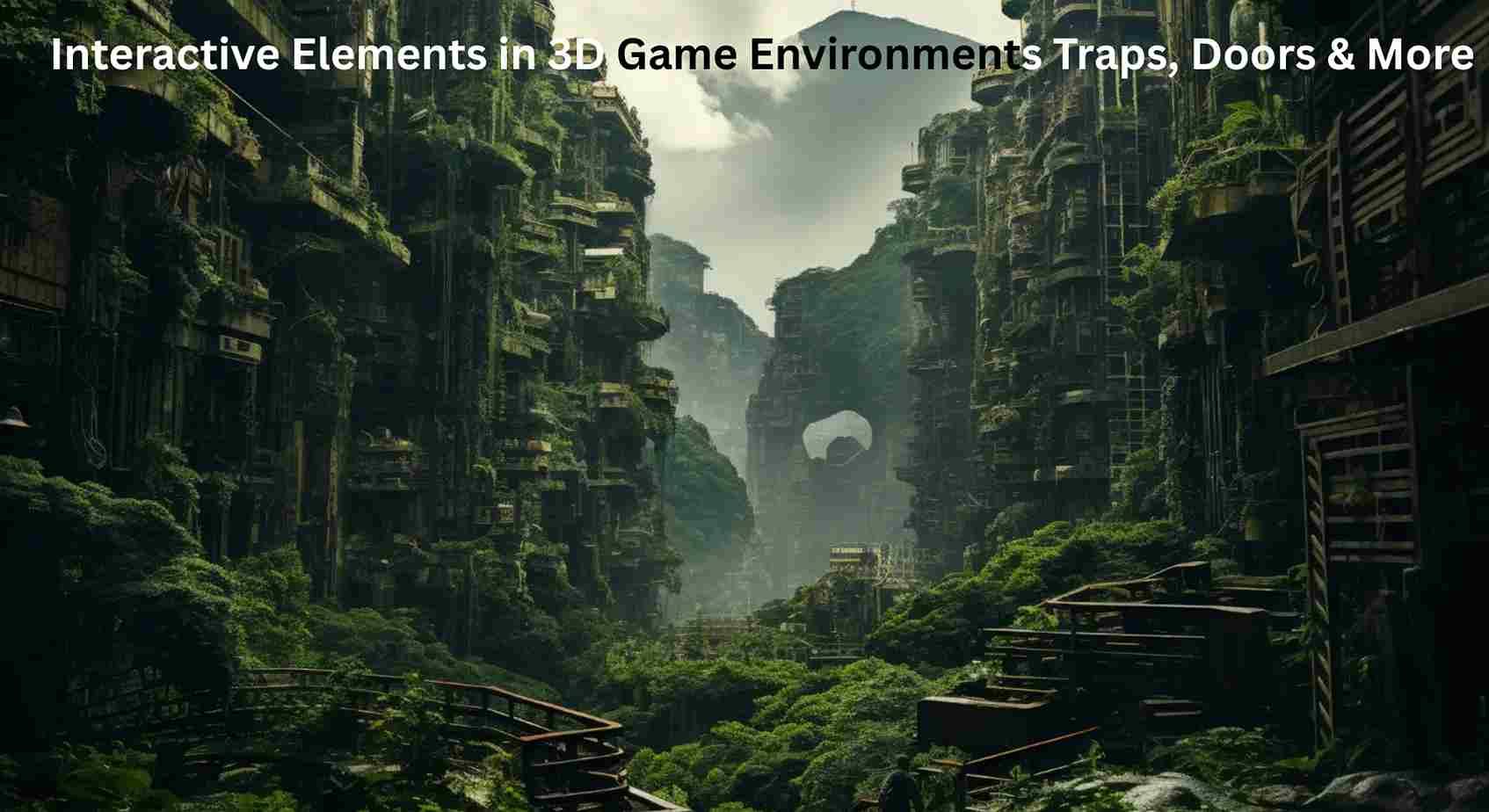Creating engaging and immersive 3D game environments goes beyond stunning visuals — it’s about interaction, storytelling, and gameplay flow. One of the most effective ways to bring your world to life is by incorporating interactive elements such as traps, doors, switches, and other 3D game assets that directly respond to the player’s actions.
Whether you're developing an open-world RPG or a fast-paced shooter, the design of these interactive elements requires a smart blend of 3D modeling games, 3D hard surface modeling, and dynamic environmental design. In this article, we’ll explore how to design and integrate these interactive components effectively using modern 3D environment modeling techniques.
Why Interactive Elements Matter in 3D Game Environments
Interactive elements serve multiple purposes:
- They guide player progression
- Enhance immersion
- Introduce challenges and puzzles
- Reinforce game mechanics
That’s the magic of combining 3D game assets with functionality.
Planning Interactive 3D Game Assets: Key Considerations
Before jumping into Blender, Maya, or Unreal Engine, it's crucial to ask:
- What is the function of this asset?
- How will it affect gameplay?
- Will it need animations or physics?
- What triggers its activation?
This phase influences both the 3D modeling process and how you build interactions in the engine.
For example, a trap may require:
- Multiple states (idle, triggered, reset)
- Collision detection zones
- Visual cues for player anticipation
In terms of modeling, this means creating separate meshes for moving parts, animatable joints, and ensuring modular design.
Using 3D Hard Surface Modeling for Mechanical Elements
This technique involves crafting rigid, mechanical structures such as gears, pistons, hinges, and panels.
Key principles:
- Maintain clean topology for animation
- Use bevels and edge loops for realistic lighting
- Prioritize modular design for reusability
For example, a sci-fi airlock door in a 3D game environment might include:
- A main panel with animated slide segments
- Pistons or gears made with hard surface modeling
- Glowing UI panels for player interaction
These types of props 3D models not only look great but also serve gameplay needs when designed with interactivity in mind.
Designing Traps: Combining Art and Mechanics
From floor spikes to falling boulders, traps are among the most exciting interactive 3D game assets. They require careful synchronization of 3D modeling, animation, and scripting.
Essential elements of trap design:
- Visual design: Make the trap visible or subtly hidden.
- Reset behavior: Does it reset automatically or stay triggered?
Example Workflow:
- Modeling: Use hard surface modeling to create mechanical components like gears, blades, or platforms.
- Animation: Animate individual components (e.g., spinning blades).
The more modular your props 3D model is, the easier it is to create variants or reuse parts across multiple levels.
Doors and Switches: Functional 3D Game Assets
Doors are more than passageways. They can be barriers, puzzles, or narrative tools. Depending on the theme of your game, doors can be crafted using materials from wood and metal to futuristic alloys—all modeled using 3D hard surface techniques.
Types of doors in 3D game environments:
- Automatic doors (slide open on proximity)
- Puzzle doors (require solving clues or finding keys)
- Hidden doors (triggered by levers or secret conditions)
When creating switches or levers:
- Use 3D hard surface modeling for mechanical parts.
- Animate toggle motions for realism.
- Add audio and visual feedback (e.g., lights or sound effects) upon activation.
By planning the animations and states early, you can create satisfying feedback loops for the player and support immersion.
Vehicles and Traps: An Unexpected Combo
Vehicles don’t often come to mind when designing traps, but car 3D model or 3D vehicle modeling can be creatively used in gameplay. For instance, a player might trigger a booby-trapped car that explodes or rolls down a hill, turning transportation assets into hazards.
Additionally, interactive vehicles like tanks or flying drones might:
- Lock/unlock depending on story progression
- Require players to find power sources or keys
This crossover between 3D game assets and traps enriches the player's strategic options and adds depth to gameplay.
Props 3D Models: Small Details, Big Impact
Even small objects like crates, barrels, torches, or control panels can become interactive when well-designed. These props 3D models serve as:
- Puzzle elements
- Clues or collectibles
- Environmental storytelling tools
- Match the game's visual style
- Are optimized for performance (polycount, LODs)
Optimizing for Real-Time Performance
Interactive elements, especially those with animation or physics, can be resource-intensive. Always consider:
- Using baked animations or timeline triggers instead of real-time physics, where possible
- Grouping related objects to minimize draw calls
- Creating LODs (Levels of Detail) for traps and doors
Efficient 3D game environments design ensures that your interactive elements don’t bog down gameplay or cause performance hitches.
Integration in Game Engines
Once your 3D game assets are modeled and textured, it’s time to bring them into Unity or Unreal Engine. Here’s how the process typically unfolds:
- Import the mesh with pivot points placed correctly (crucial for doors or rotating traps).
- Apply materials and ensure consistency with your environment.
- Animate or script the interaction logic using engine tools or blueprints.
- Test rigorously to ensure gameplay balance and bug-free operation.
If your trap malfunctions or doors trigger too early/late, it can break immersion or frustrate players—testing is key.
Conclusion
They transform static scenery into a living, breathing world that reacts to the player. By combining 3D hard surface modeling, thoughtful design, and technical integration, developers can create gameplay-enhancing assets that elevate the overall experience.
Whether you're working on a high-tech fortress or a fantasy dungeon, investing time in creating responsive 3D game assets will pay off in immersion and player satisfaction.
So, fire up your 3D modeling games tools, plan out those tricky trap mechanics, and start crafting the interactive experiences that make your game world unforgettable.

